Energy Saving House With ESP32
by Digijeunes in Circuits > Arduino
1304 Views, 7 Favorites, 0 Comments
Energy Saving House With ESP32
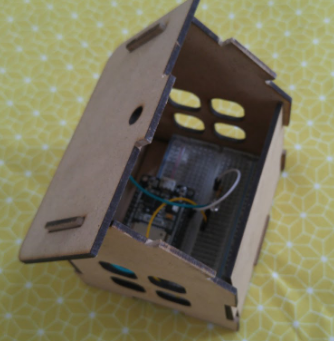
In this tutorial, you will learn how to set up your ESP32 so that it will automatically turn on its internal LED when it’s dark, and vice versa.
Install Arduino IDE
You will need to use Arduino IDE to code and upload the firmware onto your ESP32 board.
Download the software by visiting Arduino IDE > Scroll down until you see the “Download the Arduino IDE” section and choose the version based upon your operating system (e.g. If you have Windows 7, choose “Windows Installer” / if you have Windows 10, choose “Windows app”) > On the next page choose “Just download” and run the installation files.
Prepare the ESP32 Board on Your Computer

Follow the instructions provided on GitHub for your Operating System. For example, if you have Windows 7 or 10, choose “Instructions for Windows” / if you have a MacBook, choose “Instructions for Mac”
For the “Instructions for Windows” section, you can ignore the following step (see image)
Check That the Board Is Correctly Configured
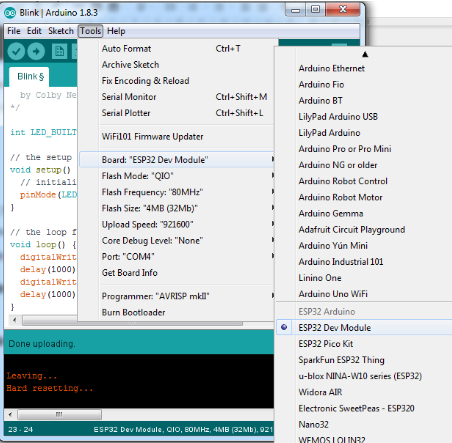
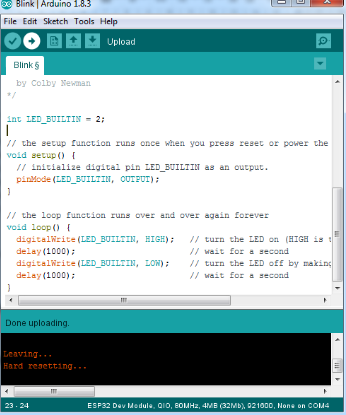
Launch Arduino IDE and select “ESP32 Dev Module” from the Tools menu > Board.
Fetch the Blink example from File > Examples > 01.Basics > Blink.
write int LED_BUILTIN = 2; at the beginning of the code
/* ESP 32 Blink Turns on an LED on for one second, then off for one second, repeatedly. The ESP32 has an internal blue LED at D2 (GPIO 02)*/
int LED_BUILTIN = 2;
void setup()
{
pinMode(LED_BUILTIN, OUTPUT);
}
void loop()
{
digitalWrite(LED_BUILTIN, HIGH); // turn the LED on (HIGH is the voltage level)
delay(1000); // wait for a second
digitalWrite(LED_BUILTIN, LOW); // turn the LED off by making the voltage LOW
delay(1000); // wait for a second}
Finally, upload the code by using the right arrow (→) button at the top right corner of the window, by choosing Sketch > Upload or by pressing Ctrl+U on the keyboard.
Wiring the Photoresistor to the ESP32
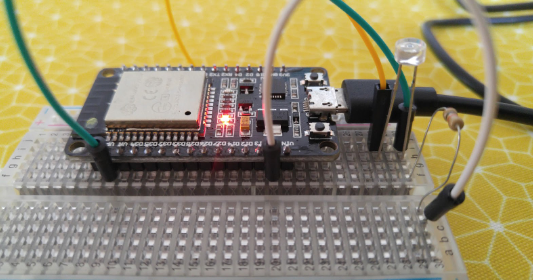
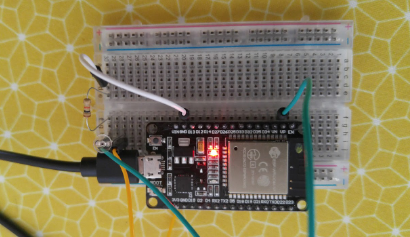
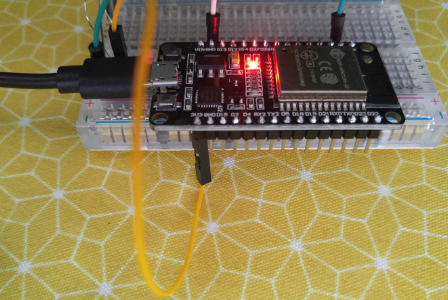
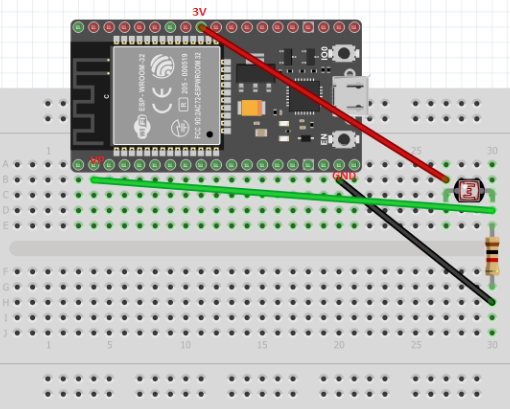
The shorter leg of the photoresistor is connected to 3V on the ESP32. The other leg is connected to pin VP (or 36) and at the same time to a 1kohm resistor, which in turn is connected to GND on the ESP32.
Note: if it’s the first time you’re using a breadboard, check out this video to understand how breadboards work.
Programming on Tuniot

Let’s create a program that turns the internal LED on and off depending on the amount of light recorded by the photoresistor. More precisely, the LED will be on when it’s dark, and off when it’s light.
For that we need to reach: http://easycoding.tn/esp32/demos/code/
Choose the appropriate blocks to create the code displayed below
- “Variables” section - Declare ‘i’ type ‘int’ Value + “Math” section - the actual value “0”
- “Variables” section - set ‘i’ to + “IN/OUT” section > “Analog” subsection - AnalogREAD PIN#
- “Logic” section - if… do & ‘i’ < 500 (‘i’ taken from “Variables” section & ‘500’ taken from “Math” section)
- “IN/OUT” section > “Digital” subsection - Integrated LED Stat
- ‘else’ appears if you click on the “Settings” wheel / icon next to ‘if’ and choose ‘else’ from the list
- “Serial” section - Print on new line
- “Various” section - Delay Ms 1000
Programming on Arduino IDE

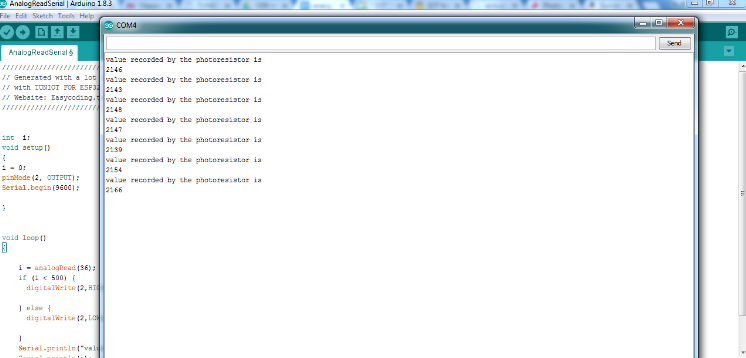
To upload the code on Arduino IDE, click on the “Copy Arduino code into clipboard” button.
then paste the code onto Arduino IDE, and upload it to the ESP32.
If you click on Serial Monitor (top right of the Arduino IDE window, below the “X” button), you should see the value that the photoristor is recording at any given time.
When the value goes below 500, the internal LED on the ESP32 will automatically turn on.